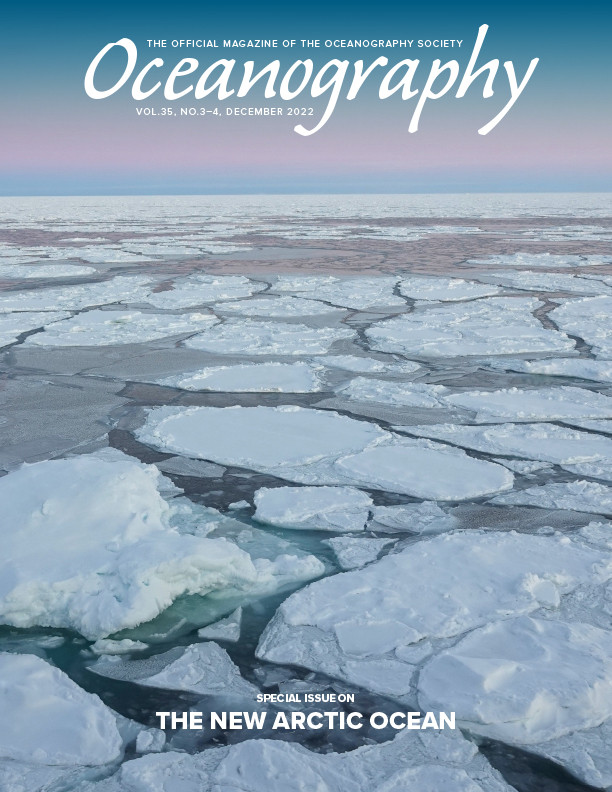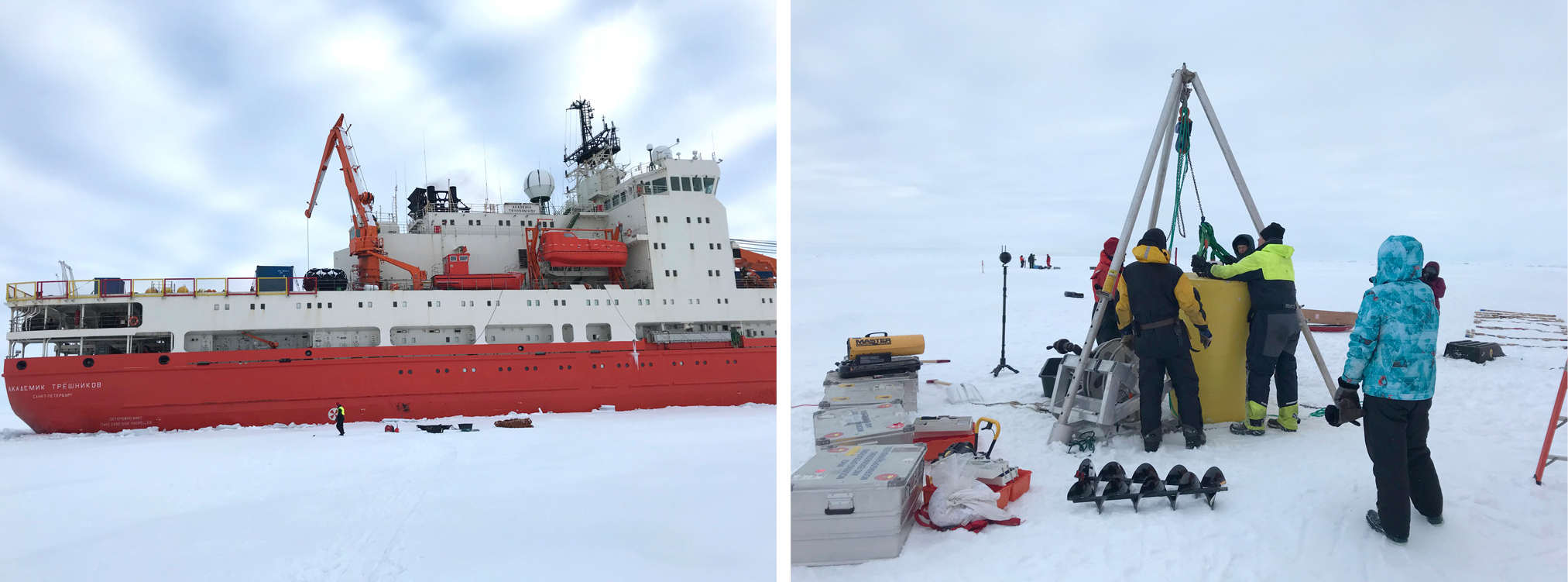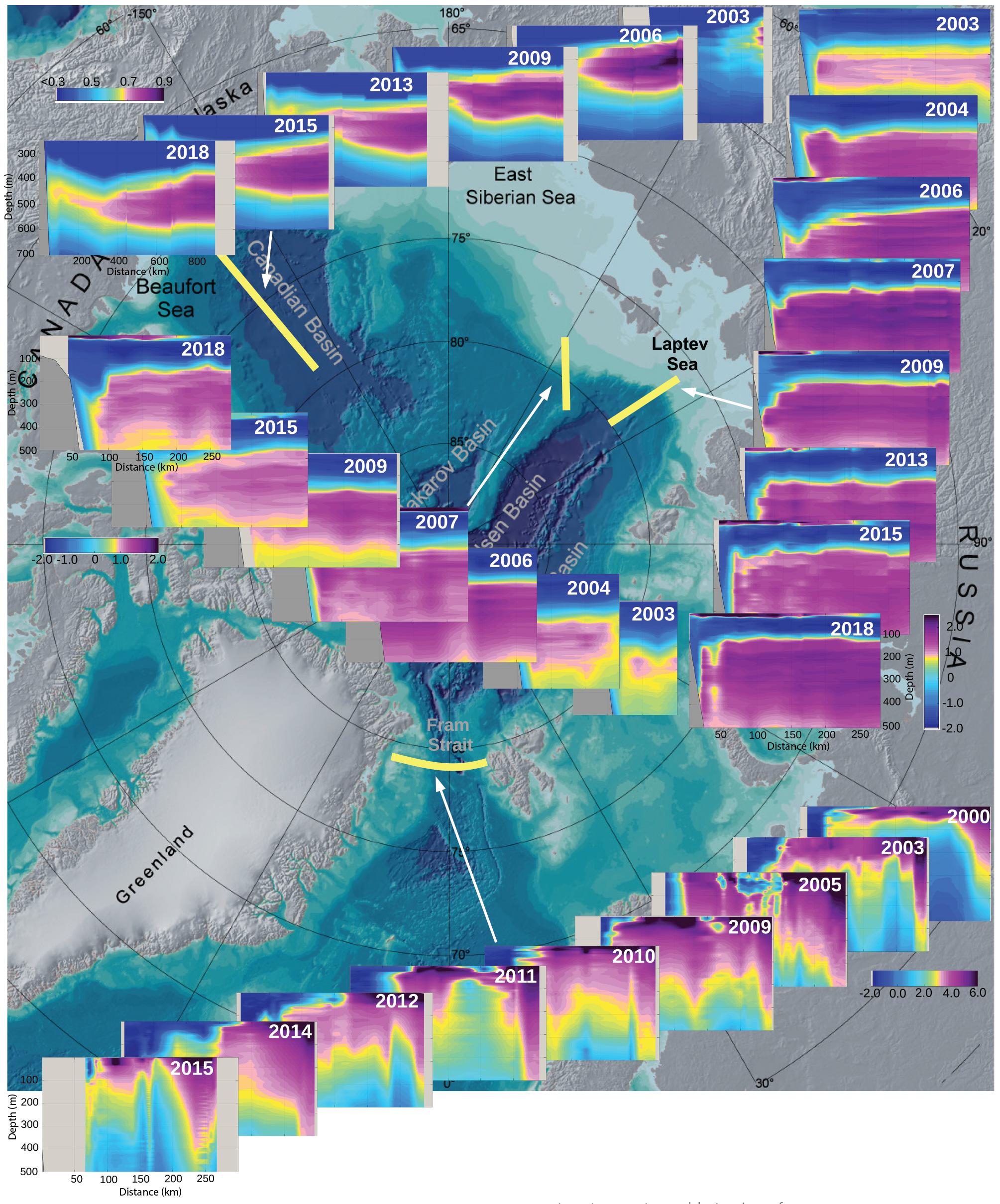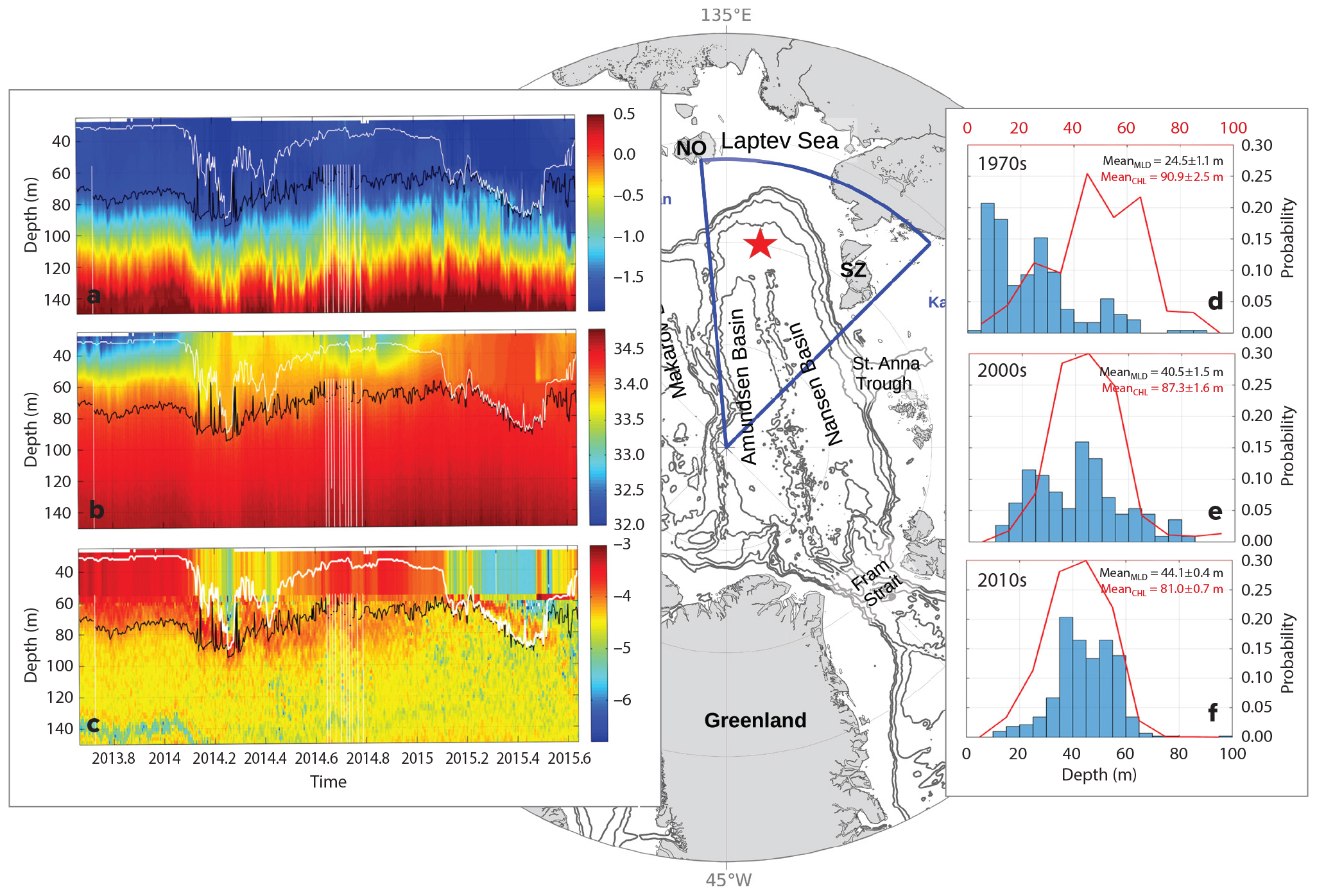Full Text
On September 2, 2002, the Nansen and Amundsen Basins Observational System (NABOS) program deployed its first mooring in the Eastern Eurasian Basin (EEB) of the Arctic Ocean. Since then, NABOS moorings, complemented by repeat multidisciplinary shipborne surveys and Lagrangian drifters (Figure 1), have provided a unique data set in an area of traditionally sparse observations. A series of moorings placed at several strategically important locations continues to be the program’s primary monitoring tool for capturing major near-slope mass, heat, and salt transports and their links to lower-latitude processes. These data will aid in quantifying shelf-basin interactions, documenting water mass transformations, and understanding key mechanisms that lead to the Arctic Ocean’s variability. International collaboration, particularly among the eight Arctic countries, has been an essential part of this observational strategy, with researchers from 18 counties taking part in NABOS cruises since 2002.
|
|
This observational strategy has paid off well. For example, data collected from the NABOS mooring in 2004 showed a strong warming signal in the warm (temperature >0°C) and salty waters of Atlantic origin (Atlantic Water, AW), suggesting that the eastern Arctic Ocean is in transition toward a new, warmer state (Polyakov et al., 2005). Moreover, NABOS mooring data collected in 2006 in the vicinity of Svalbard at ~30°E showed AW temperature anomalies unprecedented in the history of regional instrumental observations (Ivanov et al., 2009). Concerted efforts of the international team of scientists from the United States, Germany, Russia, and Norway provided evidence that this anomaly took about 1.5 years to propagate from the Norwegian Sea to the Fram Strait region, and it took an additional 4.5 to 5 years to reach the EEB slope. NABOS mooring observations also revealed the structure of the boundary current, showing a sixfold decrease of the current’s speed on the route from Svalbard to the central Laptev Sea (Pnyushkov et al., 2015). NABOS repeat oceanographic transects confirmed the ongoing large-scale warming of the EEB. Furthermore, combined with data provided by other projects, they showed that the warm anomaly found its way further eastward towards the Canadian Basin (Figure 2). This warm pulse peaked in 2007–2008. By the late 2000s, the ocean interior had become slightly cooler (by 0.07°C) relative to the peak years, but still remained much warmer (by ~1°C) compared to the climatology of the 1970s (Polyakov et al., 2012).
|
|
Enhanced mooring capabilities of the program in the 2010s were critical in documenting and understanding further dramatic changes in the polar basins. These changes are closely related to the progression of anomalies from the Atlantic sector of the sub-Arctic seas into polar latitudes—a process called “Atlantification” (Polyakov et al., 2017). These observed changes represent a shift toward EEB conditions that resemble those observed in lower latitude regions—that is, warmer water with weaker vertical stratification in the upper ocean. At the same time, 2013–2018 NABOS mooring observations showed a lack of strong changes in the intensity of EEB along-slope water transports, suggesting that eastern Arctic Ocean Atlantification is related to changes in salinity at upstream locations in the Barents Sea (Pnyushkov et al., 2018, 2021).
The consequences of the reduced upper ocean stratification in the EEB are manifold. Both regional CTD surveys and mooring observations provide strong evidence of enhanced winter ventilation (Figure 3). For example, the CTD observations suggest an increase in winter (February–April) mixed layer depth—a robust indicator of winter mixing—in the 2010s compared to 1970s climatology (Figure 3, right). NABOS 2013–2018 mooring observations captured complete erosion by winter convection of the stratified layer (called Cold Halocline Layer, CHL) that buffers the upper ocean and sea ice from the warmth of the AW (Figure 3, left). Deep penetrative ventilation of the upper ocean well beyond the surface mixed layer strongly suggests an important role for entrainment rather than slow, molecularly driven, double-diffusive mixing in the upper EEB. This deep winter ventilation has resulted in enhanced upward AW heat fluxes sufficiently large to contribute substantially to the diminished regional sea ice cover (Polyakov et al., 2017, 2020b).
|
|
Using 2004–2018 mooring observations from the upper 50 m layer in the EEB, Polyakov et al. (2020c) revealed increased current speeds and shears associated with greater coupling between wind, ice, and oceanic currents and their vertical shear, particularly in summer. Substantial increases in both current speeds and shears are dominated by a twofold amplification of currents in the semidiurnal band, which includes tides and wind-forced near-inertial oscillations. These results point to a new positive feedback mechanism in which increased winter ventilation of the ocean interior associated with declining sea ice cover and weakening of halocline stratification enhances release of heat from the ocean interior to the sea surface, resulting in further sea ice loss. This process is coincident with potential alteration of vertical nutrient fluxes that support oceanic primary productivity, food web structure, and carbon export from the deep ocean layers and seabed to the atmosphere (Polyakov et al., 2020a,b).
The rapid and unforeseen changes in the eastern Arctic climate system associated with Atlantification are complex, poorly understood, and require careful evaluation. Specifically, assessment of the potential for Atlantification in the EEB and its expansion further eastward into the Makarov Basin of the Arctic Ocean is critical for improving skills for seasonal sea ice predictions (Polyakov et al., 2021). A new (2021–2025) cycle of NABOS observations will enable us to quantify the role of freshwater inventories and transports in shaping upper ocean stratification and ventilation of AW heat in the vast area spanning eastward from Severnaya Zemlya to the central East Siberian Sea. New NABOS mooring design incorporates enhanced observational capabilities in the very top layer of the ocean and includes multidisciplinary oceanographic and sea ice sensors (Kipp and Charette, 2022, in this issue). One of the important results of the first 2021 cruise of this cycle was deployment of nine such moorings along the Siberian slope. These efforts will inform the scientific community and the broader public about major changes in the EEB and beyond, as well as their potential impacts for the state of ice cover, marine ecosystems, and conditions in the mid-latitudes.




